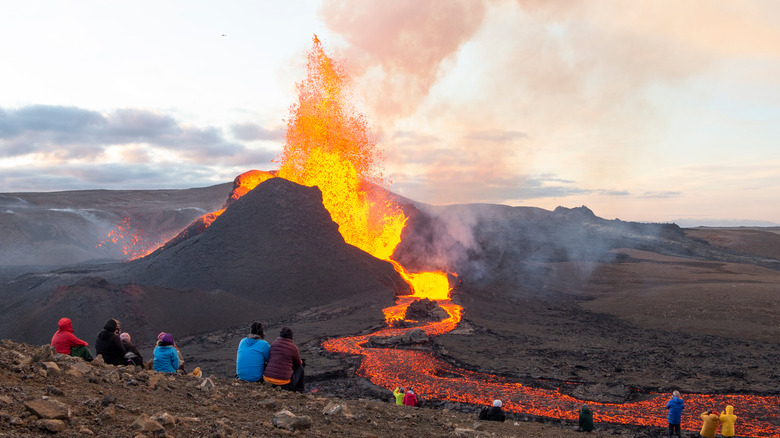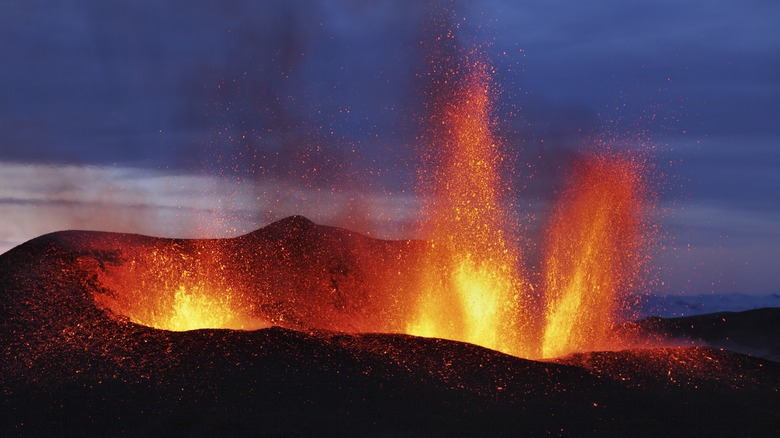Why Iceland Has So Many Volcano Eruptions
Volcanoes are both terrifying and magnificent phenomena to behold. In Iceland, they're simply a natural part of life that the residents have learned to live with. The about 130 volcanoes in the country are one reason it's known as the Land of Fire and Ice — glaciers are the other reason. Why Iceland, though? There are actually two causes of volcanoes and eruptions on this island nation.
First of all, volcanoes are the reason Iceland exists. The area where volcanic activity has created the island over 18 million years rests on a constructive plate boundary called the Mid-Atlantic Ridge, which is part of one of the world's longest mountain ranges (albeit underwater) at nearly 10,000 miles long. Along this ridge is where the North American and Eurasian tectonic plates continuously move apart at a rate of 2.5 centimeters a year as magma from underneath Earth's crust fills in the gap.
Second of all, this part of the Mid-Atlantic Ridge is the site of a mantle plume and a hot spot, similar to Hawaii. A mantle plume is a narrow upwelling of very hot rock that rises from Earth's core, while a hot spot is an area where extra hot magma melts and thins Earth's crust, leading to volcanic activity. Generally, the eruptions consist of basalt lava, which flows easily and doesn't explode because gases are allowed to escape. You can also see lava spewing from fissure vents. That's why Iceland is an attractive tourist destination during eruptions: People can usually watch the lava flow without being in danger. When the 1,800-degree Fahrenheit lava flows into the water, though, explosions of steam can scatter ash into the air.
Iceland's volcano types and eruption frequency
The numerous volcanoes in Iceland are simplified into volcanic systems. One system features a central volcano (after which the system is typically named) with fissure swarms that spread away from it and consist of smaller volcanoes. While most of the volcanic systems are dormant, about 30 to 40 of them have erupted within the last few centuries and are considered active. The longest and most active system in Iceland is the Bárðarbunga system at about 118 miles.
Moreover, these systems comprise various types of volcanoes, but stratovolcanoes or composite volcanoes like Bárdarbunga are the most common. These look like conical, concave mountains that remain active for thousands and thousands of years, erupting periodically. Iceland is home to shield volcanoes like Theistareykjarbunga, too, which have a convex shape, a broad top, and a flat layer of earth that make it look like a warrior's shield.
Iceland's active volcanoes erupt every four or five years, accounting for about one-third of the lava produced on Earth in the last 10,000 years. Since it's difficult to track the stages of volcanic eruption, they can happen with little to no warning. One key indicator is earthquake swarms of numerous small tremors that aren't alarming individually but tend to indicate a pattern. In addition, volcanologists monitor changes in gas emissions and the shape of the ground.

